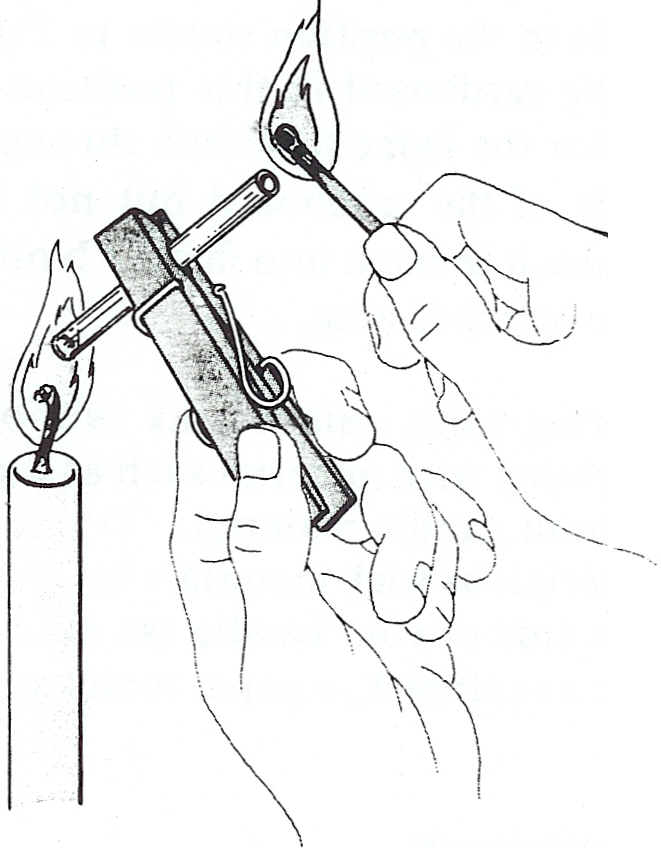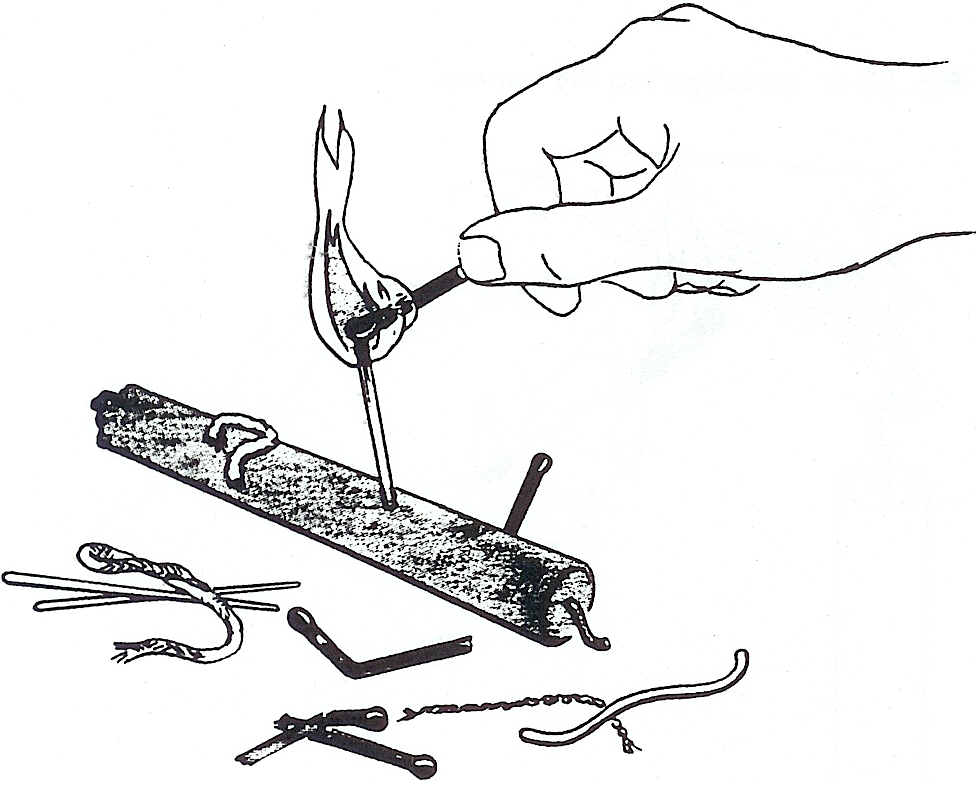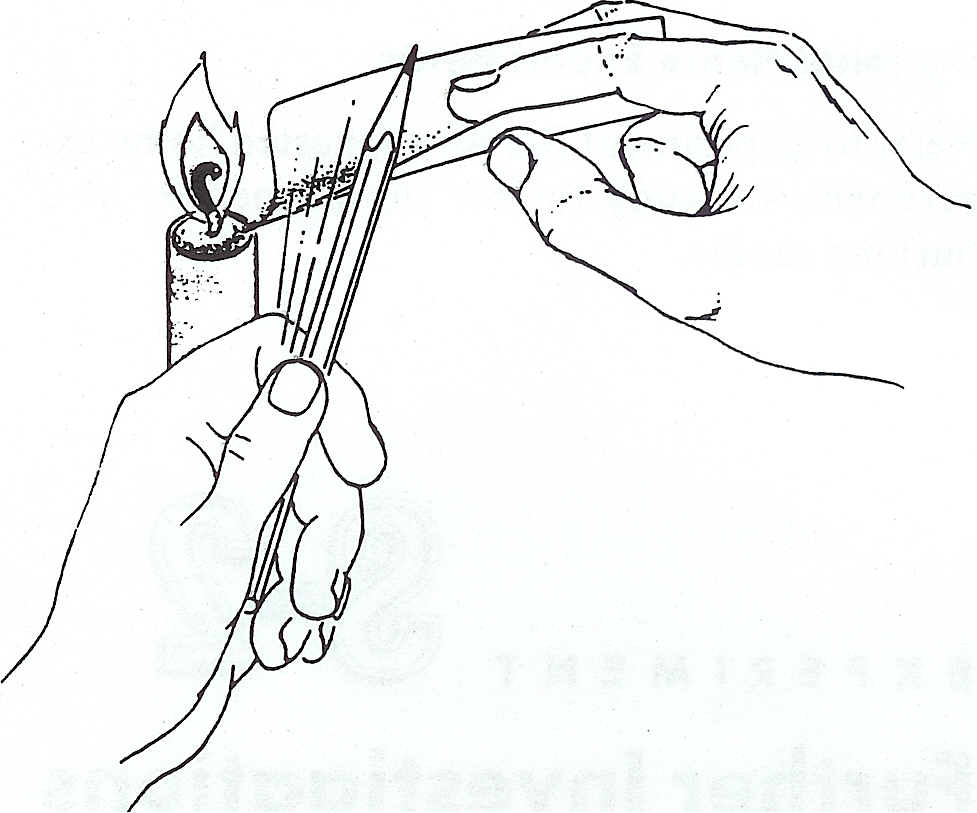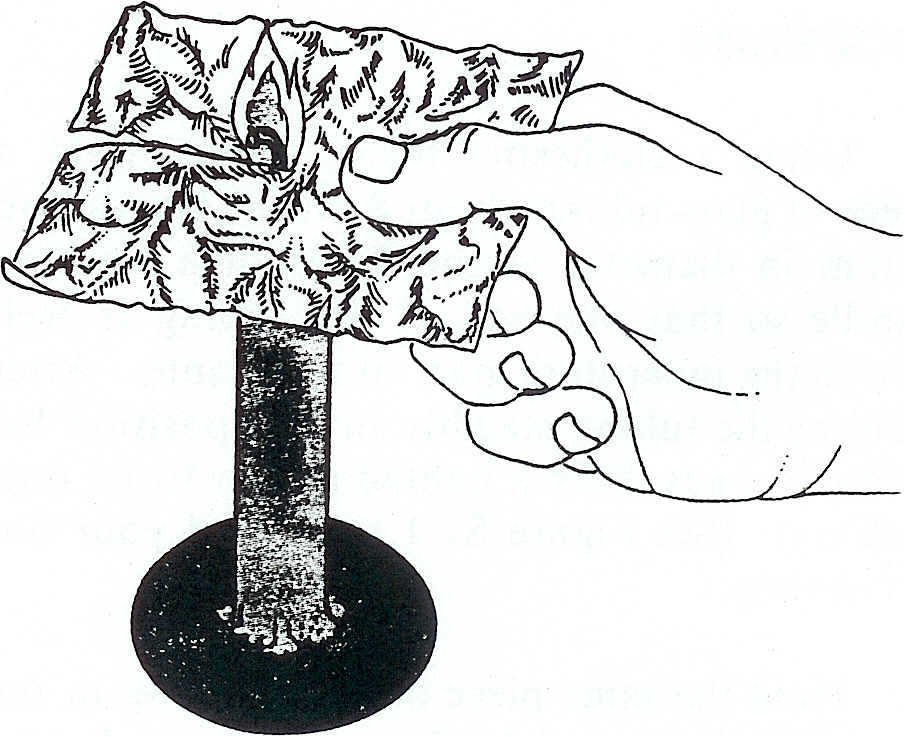
EXPERIMENT

Further
Investigations of a Burning Candle
As you
investigated the burning candle, no doubt many unanswered questions came to
mind. Perhaps there are other questions for which you have been able to find
satisfactory answers. The purpose of this experiment is to help you to find
clues that will enable you to postulate answers to some of the unanswered
questions. As you perform the experiments outlined below, keep thinking about
possible answers to the following questions:
(I) Why is the flame blue at the base, dark in the center, and yellow elsewhere?
(2) What is the purpose of the wick in a candle?
(3) Why is it possible to extinguish a candle flame by blowing on it?
![]()
![]()
![]() (4)
Why is the flame shaped as it is?
(4)
Why is the flame shaped as it is?
PROCEDURE
a. Using a
clothespin for a clamp, hold a piece of glass tubing about 8 cm in length and 8
mm in diameter in the flame of a burning candle so that one end of the tubing is
well within the inner dark part of the flame. After holding the tubing steadily
in this position for a few seconds, hold a lighted match to its outside end.
(See Figure S2-I.) Record your observations.
b. Hold the same piece of glass tubing in the upper bright part of the flame and
again hold a lighted match to its outside end. Record your observations.
c. Light a candle and allow it to burn for about half a minute. With a lighted
match in hand, quickly blowout the candle and hold the match about an inch from
the wick in the column of "smoke" emanating from it. (See Figure S2-2.) Record
your observations.


Fig. S2-1
Investigating the dark zone of the
flame. Fig. S2-2 Investigating the
vapors.
d. Move a
horizontally held index card quickly down over the flame of a burning candle to
the position shown in Figure S2-3. Hold the card in this position just long
enough for the flame to scorch through to the upper side of the cardboard but
not long enough to cause it to burst into flame. Note the pattern of the
scorched area.


Fig. S2-3
Zones in the
flame.
Fig. S2-4 The nature of wicks.
e. Scrape
some "soot" from the piece of glass tubing used earlier into the liquid in the
bowl of a burning candle. Observe the motion of the particles in the liquid.
(See Figure S2-5.)


Fig. S2-5
Investigating the liquid in the bowl of a
candle. Fig. S2-6 Inserting on aluminum
foil below the flame.
f. Snuff out
the candle flame by wetting your thumb and forefinger and quickly pinching the
burning wick. Relight the candle and try blowing out the flame by using
different breath velocities.
g.
Slide a horizontally
held piece of slotted aluminum foil around the wick just below the base of the
flame and above the melted wax, as shown in Figure S2-6. Leave the aluminum in
place for about 30 seconds. Account for the observed results.
h.
Using a medicine
dropper, place 1 or 2 drops of water on the molten wax in the bowl of the
lighted candle. What happens?
i. Try lighting some candle wax without a wick. Try lighting wick material such
as a piece of string without candle material. Try several different materials as
wick materials by sticking them into the side of your candle (as shown in Figure
S2-4): a toothpick, a paper matchstick, a piece of yarn, braided picture wire, a
piece of copper wire, a piece of string. Try your best to make each "wick"
function properly. What are some of the properties necessary for wick materials?
Some Questions and Regularities
1. Will a candle of larger diameter produce a larger flame? How can you
construct a candle so that it will produce a larger flame? Test your hypothesis
by experiment.
2. List as many of the necessary properties of a good wick material as you can.
3. Write a
paragraph describing what you think is taking place within the candle
flame. Justify your arguments with experimental evidence. Propose "answers" to
as many of the introductory questions as you can.
A Question to
Wonder About
How is the
solid wax, which is composed of carbon and hydrogen, transformed into the
products of combustion?